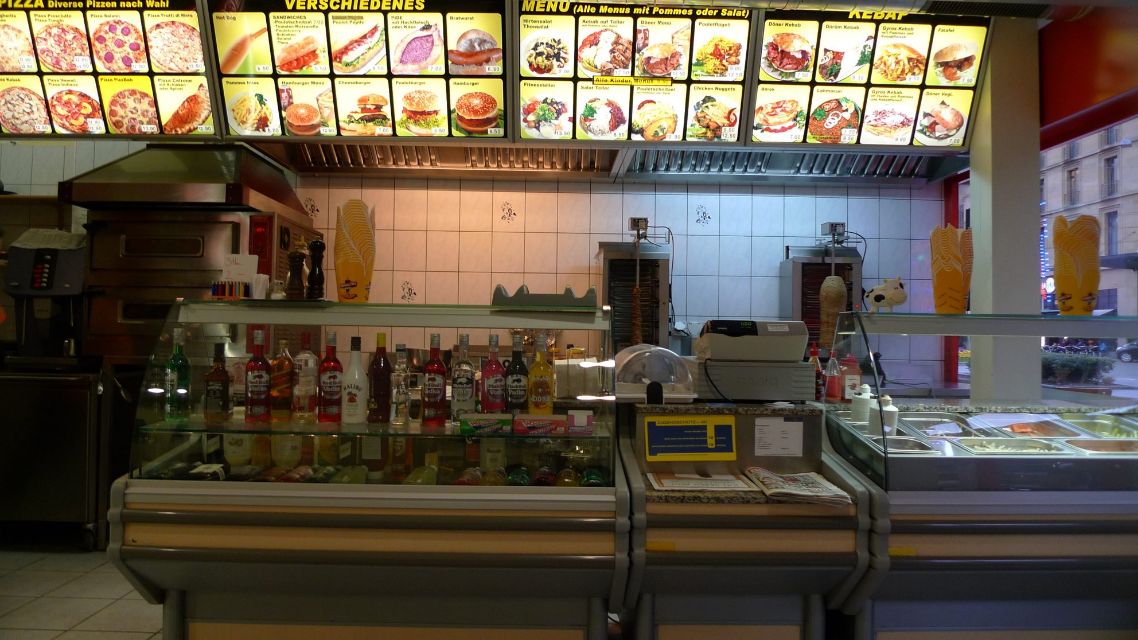The framer and the framed
Is it all just a lie? Of course, dishes always evolve. As much as we would love to think otherwise, our favourites may change over time as part of who we are becoming and where we are as a society. The Döner is in the teenage period of its life: its history is clear, yet it also wants to fit in with its peers. But it rarely speaks on its own. Much like Marx said, “they cannot represent themselves, they must be represented”, we must question who it is that frames our beliefs and perceptions.
Being perceived as Turkish, the Döner is used over and over as a symbol for “being Turkish”. News media mock right-wing politicians devouring a Döner Kebab while these parties use food scandals to paint a dire picture on migration. Politicians use the Döner stores as proof of supposed Islamization. Regulations around what type of meat can be called Kebab codifies this new hybrid dish in law, while proclaimed origin stories of Turkish inventors in news and magazines strengthens our belief of a foreign Döner Kebab.
Some say the media is a mirror of society, but we know that it can also shape what we know and think is true. Using the Döner symbolically as this, be it explicit or not, reinforces a picture of Turkish culture that “we” (white, educated) paint, blurring the lines of German influence, and creating artificial fault lines between we and they. Most drastically, this cost the deaths of innocent lives. Between 2000-2007 a group of neo-nazi’s went on a killing spree in Germany. Many of the victims were small business owners, including Kebab vendors, of Turkish and Kurdish origin. These killings were referred to by the press as the Kebab murders. More recently in 2019, in Halle, Germany, a young man with rightwing-extremist motives unsuccessfully charged a synagogue but went on to kill two people at a Döner Kebab store, trying to satisfy his hate of the other.
Of course, these tragedies are only the extreme. Nevertheless, we must question our perception and who portrays who. The story of the Döner Kebab is unexpected. And it is not a German phenomenon only. All around Europe, cultures show their own evolution of similar dishes, as the Kapsalon in the Netherlands or the French Sandwich Grec. And all around Europe, we see the Döner and everything associated with it becoming a symbol of difference, an artificial drawing line between us and them. Maybe we can appreciate more how much we all live together in this world, rather than apart.
